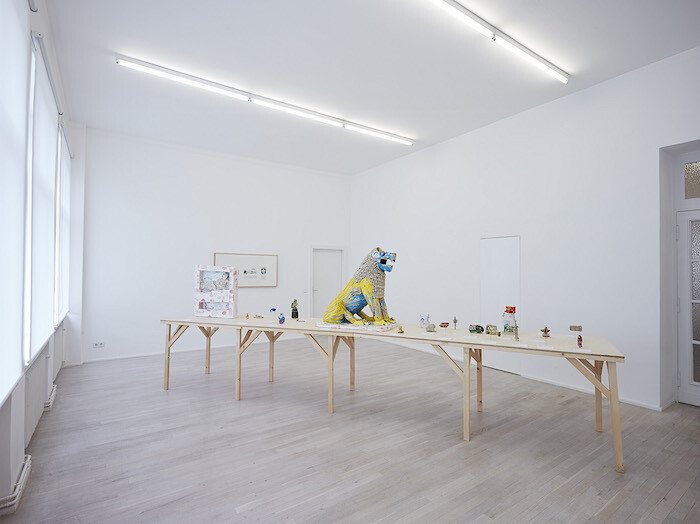Categories
Subjects
Authors
Artists
Venues
Locations
Calendar
Filter
Done
July 29, 2016 – Review
Michael Rakowitz’s “The invisible enemy should not exist”
Ana Teixeira Pinto

The Invisible Enemy Should Not Exist (Aj-ibur-shapu), from which Michael Rakowitz’s exhibition at Barbara Wien in Berlin borrows its name, was how the street which ran through the gate of Ishtar, in ancient Babylon, was known. Built around 575 BC under King Nebuchadnezzar II and dedicated to the goddess Ishtar, the gate was made of glazed brick covered in lapis lazuli and decorated with alternating rows of dragons and aurochs. Unearthed in 1899, the site where the gate originally stood was greedily excavated by German self-taught archaeologist Robert Koldewey, who lifted up the entire tower and shipped it to Berlin, where it still stands as the main attraction of the Pergamon Museum. Though Iraq repeatedly protested this heritage seizure, the gate—much like the ancient Greek Pergamon Altar, taken from present-day Turkey—was never returned.
In the nineteenth century, archaeology was a discipline mainly deployed in countries where its practitioners had no cultural relation to the population whose history they unearthed. When Europe elected Babylonia as the origin of (its) civilization, it did not simply appropriate its archaeological treasures, it also appropriated its history. Implicated in foundational myths and nation-building, archaeology became tied to colonial history: everyone has a claim to Babylon, except …